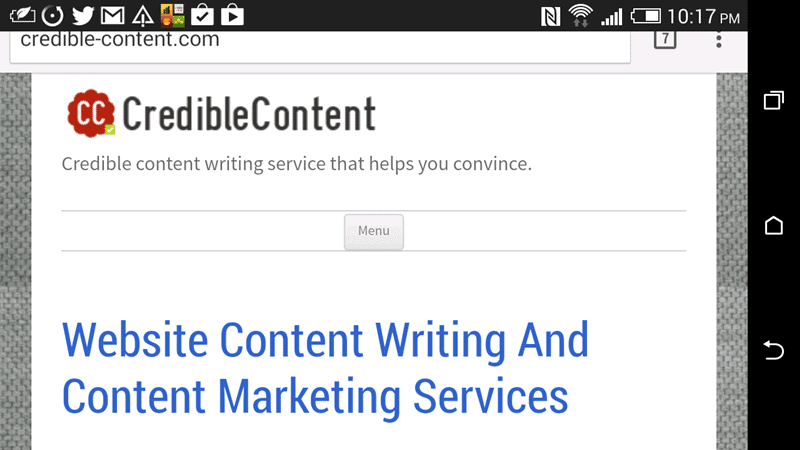This issue has got nothing to do with elementary content writing, but with 47% searching for product reviews and 29% obtaining additional information on their mobile phones and 50% mobile users using their phones as primary Internet source (source – 2013 stats), not creating and tailoring your content for mobile users can make a big dent in your bottom line.
Personally – and I’m not sure how many people are doing this – when I come across a link on my mobile phone that I’d like to read properly I save it in Pocket and then later on either read it on my daughter’s iPad or on the computer. As the stats show above, most people don’t mind reading long texts on their mobile phone.
There are two aspects to creating mobile friendly content on your website: having a layout that seamlessly scales according to the screen-size, and content that is easier to read and comprehend on a smaller screen. The design aspect is controlled by your web designer (he/she should keep in mind the content-reading requirement of your visitors). How do you write or create content that is mobile-friendly?
There are three
ways of going about it; it depends on your priority. If not many of your visitors come from their mobile phones (you can find that out from Google Analytics) but still you don’t want to take chances, you can keep the same content for your computer users and mobile users, as long as your design is liquid and quickly scales according to the screen-size. For instance, that is, if you are reading this from your computer or laptop, reduce the width of your browser window and see how this web page turns into a single column layout below a certain width.
The second option is to recreate your content in such a manner that it’s easier to read it on all the devices.
Here are a few things you can consider:
- Create shorter headlines: Shorter headlines don’t hog the precious real estate on the small screen and your user doesn’t have to scroll up-down or left-right in order to be able to read your headline and figure out what your page is about. Since most of the mobile users are in a highly distracted stage (you never know where they are when they are checking out your website) use clearer, smaller expressions so that they don’t have to use their minds much.
- Use smaller paragraphs: If possible, just use one sentence per paragraph. This way it is easier to read text without straining the eyes and even if the font size is increased, the person doesn’t have to scroll up-down much in order to read the message confined within that paragraph.
- Use bulleted points whenever possible:
Bulleted points enable you to write in a concise manner without having to bother about complete sentences and other grammatical necessities. Due to smaller sentences (sometimes just a couple of words) it’s also easier for your readers. - Don’t make visitors click through multiple links: Linking is good, especially when you already have a webpage/blog post dealing with a particular subject and it doesn’t make sense to write about it again, but too much of it can create problems for your visitors. It’s not very easy to tap on hyperlinks on small screen and even when they tap on the links, coming back to the original page can be a great hassle. How do you avoid this hassle?
- Create highly focused, vertical pages:
When you create highly focused pages you don’t have to use many links. You are dealing with just a single topic. SEO experts advise you to link to as many pages from your website/blog from your current webpage/blog post as possible and if you want to follow such guidelines, go ahead, but make sure the message of your webpage/blog post doesn’t remain incomplete without having to tap those links.
The third option, a bit more time-consuming, is to create multiple versions of your content. This way you can serve all the segments of your visitors, whether they are accessing your website from their computers and laptops, tablets PCs or mobile phones. Just make sure you don’t end up creating lots of duplicate content.

